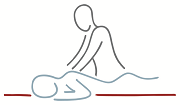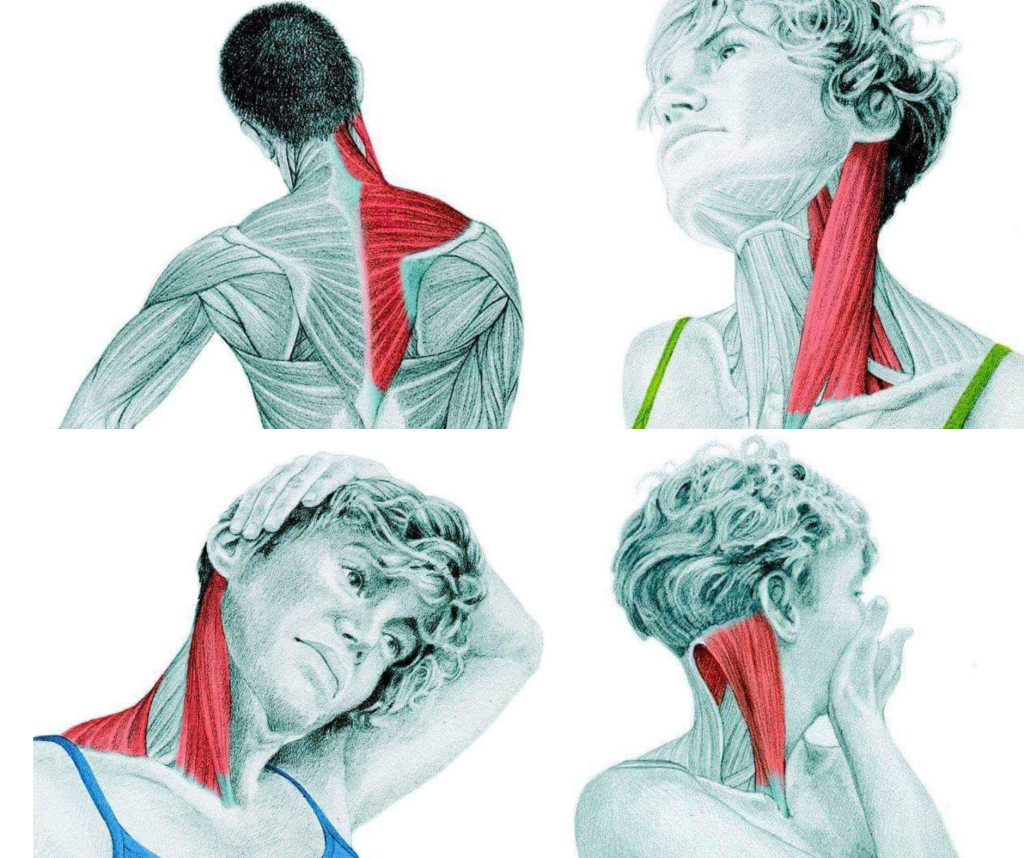There are many muscles in the neck that control head and shoulder movements and in this article, I am looking at four of the main ones that commonly cause problems. This short video also shows the effects that poor posture, while sitting, can have on this area. (2) Facebook.
On my Business Facebook page, I have a video that shows some stretches for these neck muscles that can help when you take breaks from your desk or car.
Sternocleidomastoid (SCM) –
This large, flat muscle starts with two heads attached to the Sternum (Breastbone) and the Clavicle (Collar bone). These heads merge and the muscle attaches to the skull behind the ear. There is a SCM muscle on both sides of your neck. Their main function is to shake and nod the head. Tension in this muscle can cause headaches and face pain.
Scalenes –
The three sections of Scalenes are located behind the SCM on the side of the neck. Again, you have one on each side. They are attached to the cervical (neck) vertebrae at one end and the first rib at the other. They also nod and shake the head but have the added function of helping to lift the ribs when taking a deep breath. As the Brachial Plexus (bundle of nerves) passes between the Scalene muscles, any tightness or tension in this area can cause pain and tingling in the chest, shoulder and arm as the nerves get irritated.
Upper Trapezius –
The Trapezius muscle is a large sheet that lies all across the upper back, shoulders and neck. It is usually described as having Upper, Middle and Lower fibres. Each of these sections can perform separate functions. The Upper fibres start from the base of the skull and wrap around the neck to attach to the Clavicle. This muscle can tilt the head from side to side as well as rotate it. The Trapezius muscle is often a source of tension and pain particularly in someone who works at a desk, is stressed or feeling the cold.
Levator Scapula –
As the name suggests, the main function of this muscle is the elevate the Scapula (Shoulder Blade). However, I have included it because it also rotates and tilts the head. One muscle on each side starting in the first four cervical (neck) vertebrae and travelling down the side of the neck, under the Upper Trapezius to attach to the upper, middle edge of the shoulder blade. This muscle often gets tight in people who drive a lot or hold their heads in a forward position.
If you need any help or advice about how to look after your neck with Soft Tissue Therapy and a more suitable Posture, please get in touch.

